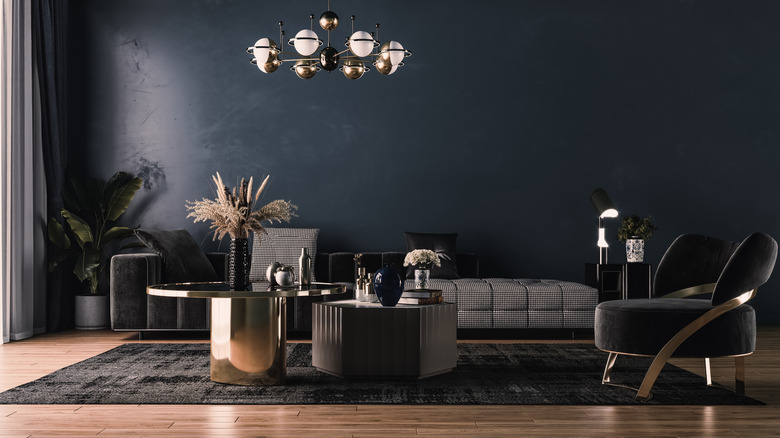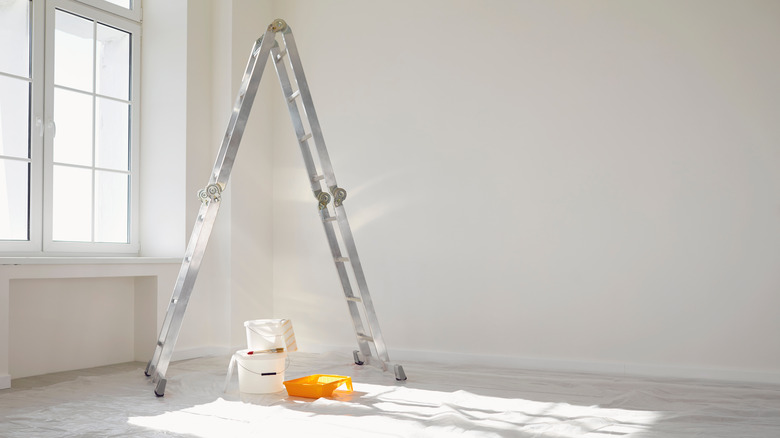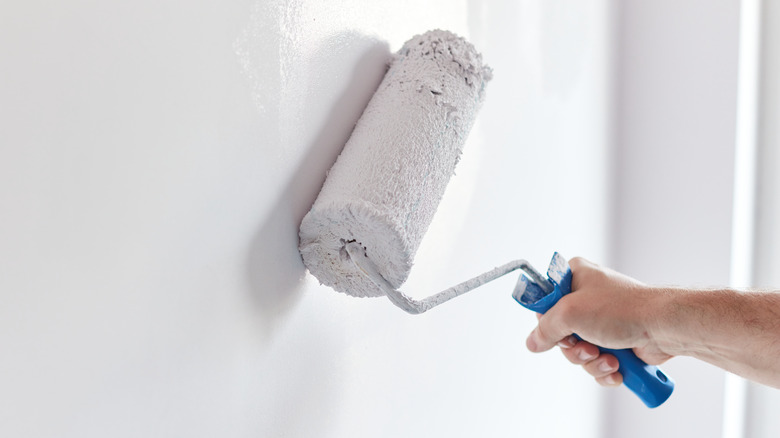The Best Way To Paint Over Dark Walls And Lighten Up Your Home
Are your dark walls making your home appear smaller than it is? Maybe you've decided that it's time to repaint. Without the proper materials and execution, however, going from dark-colored walls to light-colored walls can be difficult. Both color choices can look beautiful in any home, but you need more lighting in a dark-colored room versus one featuring lighter walls.
Lesley Myrick Interior Design explains that certain rooms are better suited for light or dark paint. Lighter colors, the design firm notes, work better in large open rooms and rooms that are task-oriented, like offices. The rooms that work best for dark-colored walls are small and have four defined walls.
Dark colors also work great as room accents. If you've decided to change your wall paint from dark to light because the room is too big or you don't have enough lighting, consider only repainting three of the walls. Then one wall will be left dark as an accent wall.
This said, if you're ready to paint over your dark-colored walls, here's the best way to tackle this painting DIY.
Choose the right primer
Going from dark painted walls to lighter walls in order to lighten up your room involves prep work. Like when painting walls of any color, you'll want to start by filling any holes in the wall with spackle, waiting for that to dry, and then sanding it smooth. Then it's time for the most important step: painting the primer.
For the best outcome, you shouldn't skimp out by using bargain primer. Glidden recommends using a white primer. By purchasing a good white primer you won't have to do as many coats of paint as you would have to do with a less expensive one.
Using a white primer over dark-colored walls is key because it'll provide the proper base color for your light paint to appear on the wall as true to the color as possible. If you skip using the primer — or don't do enough coats — the new color will look muted by the darker color peaking through underneath it. You should do at least two coats of primer, letting each coat dry completely before painting the next.
Paint thin coats
Once you have primed the walls, it's time to paint the new lighter color and lighten up your space. Again, the type of paint you use will affect the final look of the newly painted walls. Higher quality paint will provide more coverage with fewer coats. This will save you money in the long run, but there will be a larger upfront cost. The type of roller you use can also affect the final look. Moving.com suggests using a short nap roller so you can paint thinner coats.
When painting walls, move the roller to create "V" or "W" shapes, per The Home Depot. This avoids leaving roller lines that can make the walls look streaky once dried. Like with the primer, every coat should be left to dry completely before the next coat is painted.
Note, the edges of walls are a place to pay particular attention to when changing from dark to light-colored walls. If you were to forget about painting in corners and along the edges of ceilings and baseboards, this could leave a shadowy border around them. The Home Depot and Room for Tuesday recommend doing these parts first, actually, to "cut in" from the wall's corners, which will allow you to paint the inside of the borders more quickly.


